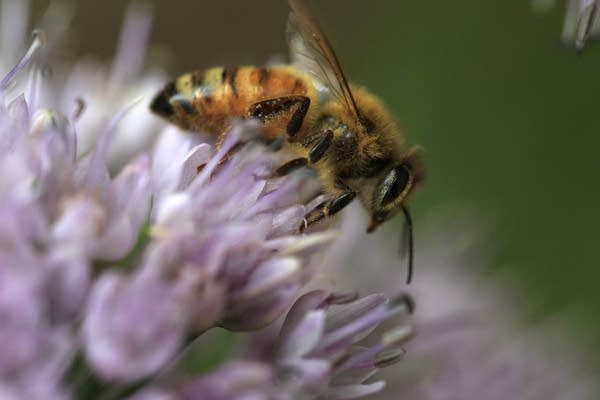Bee colony losses up from last year, study says

A honeybee collecting pollen from a flower.
Judy Griesedieck for MPR News
Go Deeper.
Create an account or log in to save stories.
Like this?
Thanks for liking this story! We have added it to a list of your favorite stories.


